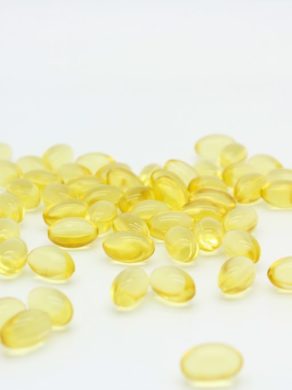What is Omega 3 Fatty Acids

Overtime, fat has been given a bad name. However, not all fats are bad. When it comes to fats with crucial health benefits, omega 3 fatty acids come to mind; especially Eicosapentaenoic acid (EPA) and Docosahexaenoic acid (DHA). EPA and DHA are essential dietary fats found primarily in certain fish. Fetal development, immune function, healthy aging, weight management, and cognitive function are among its many health benefits.
Omega 3 Fatty Acids and Hyperactivity

The benefits of omega 3 fatty acids are well documented. One such crucial health benefit includes brain health. Omega 3 support brain health through its promotion of proper cell membrane function. DHA, found plentiful in the brain and retina, is essential to cell membrane function. Studies suggest that omega 3 supplementation during pregnancy, especially EPA and DHA, supports proper fetal brain and retina development. Therefore, it is no surprise that DHA and EPA health benefits in neurodevelopmental disorders are being investigated. Studies also suggest that adequate amounts of EPA and DHA levels are important to avoiding or limiting symptoms of neurodevelopmental disorders including autism spectrum disorder.
Sources of Omega-3 Fatty Acids
DHA and EPA Sources
- Fatty Fish
- Krill Oil
- Fortified Foods
- Fish Oil Supplements
- Algae (DHA)
How Omega-3 Affects Autism Spectrum Disorder
 Autism spectrum disorder (ASD) is a developmental disorder with signs and symptoms that usually appear in the first 3 years of life. ASD affects communication and behavior. Other signs are lacking or inconsistent eye contact, repetitive behaviors, food sensitivity, sensory issues, restricted interests, hyper focus, and hyperactivity.
Autism spectrum disorder (ASD) is a developmental disorder with signs and symptoms that usually appear in the first 3 years of life. ASD affects communication and behavior. Other signs are lacking or inconsistent eye contact, repetitive behaviors, food sensitivity, sensory issues, restricted interests, hyper focus, and hyperactivity.
While there is no antidote for autism spectrum disorder (ASD), there are interventions that can improve core symptoms of autism including hyperactivity. Studies suggest that children with ASD have lower omega -3 intake when compared to children in the general population (Mazahery et al. 2017). Thus, omega-3 supplementation can have a positive effect on ASD associated hyperactive behaviors when given in adequate amounts. The possibility that mental heath disorders may be linked to abnormalities in fatty acids metabolism have sparked further interests in the link between omega-3 fatty acids and autism spectrum disorder.
Dosage Use In Autism
In a study, 500 mg capsules omega-3 fatty acids were given to participants twice daily. With each 500mg capsule containing 190 mg of eicosapentanoic acid and 90 mg of docosahexaenoic acid. Finding suggested that improvement from baseline to 12 weeks averaged 33% with most improvement experienced during the first 6 weeks (Meiri, Bichovsky, & Belmaker, 2009).
Home Trial
My experience with omega-3 fatty acid and hyperactivity was positive. Since, omega- 3 fatty acids have been proven to support long term concentration in adults; it was an easy decision for me to supplement my adorable, yet overly active 6-year-old son’s diet with omega-3. After consistent use, I noticed a change in his behavior and speech. His hyperactivity is reduced. He now sits during home lessons; albeit, we take small breaks. He also will enjoy up to 15 minutes of quiet time watching a movie; tasks that were nearly impossible for him to achieve prior to omega-3 supplementation. While I do not consider omega 3 supplementation a fix-it-all solution for autism associated hyperactivity, when used with other interventions and dietary adjustments it can facilitate positive outcomes in children with ASD. My son is proof of the effects of omega 3 fatty acids and hyperactivity!
Reference:
Gal Meiri, Yoav Bichovsky, & R.H. Belmaker. (2009). Omega 3 fatty acid treatment in autism. Journal of Child & Adolescent Psychopharmacology, 19(4), 449–451.
Mazahery, H., Stonehouse, W., Delshad, M., Kruger, M. C., Conlon, C. A., Beck, K. L., & von Hurst, P. R. (2017). Relationship between long chain n–3 polyunsaturated fatty acids and autism spectrum disorder: Systematic review and meta-analysis of case–control and randomized controlled trials. Nutrients, 9(2), 28.
